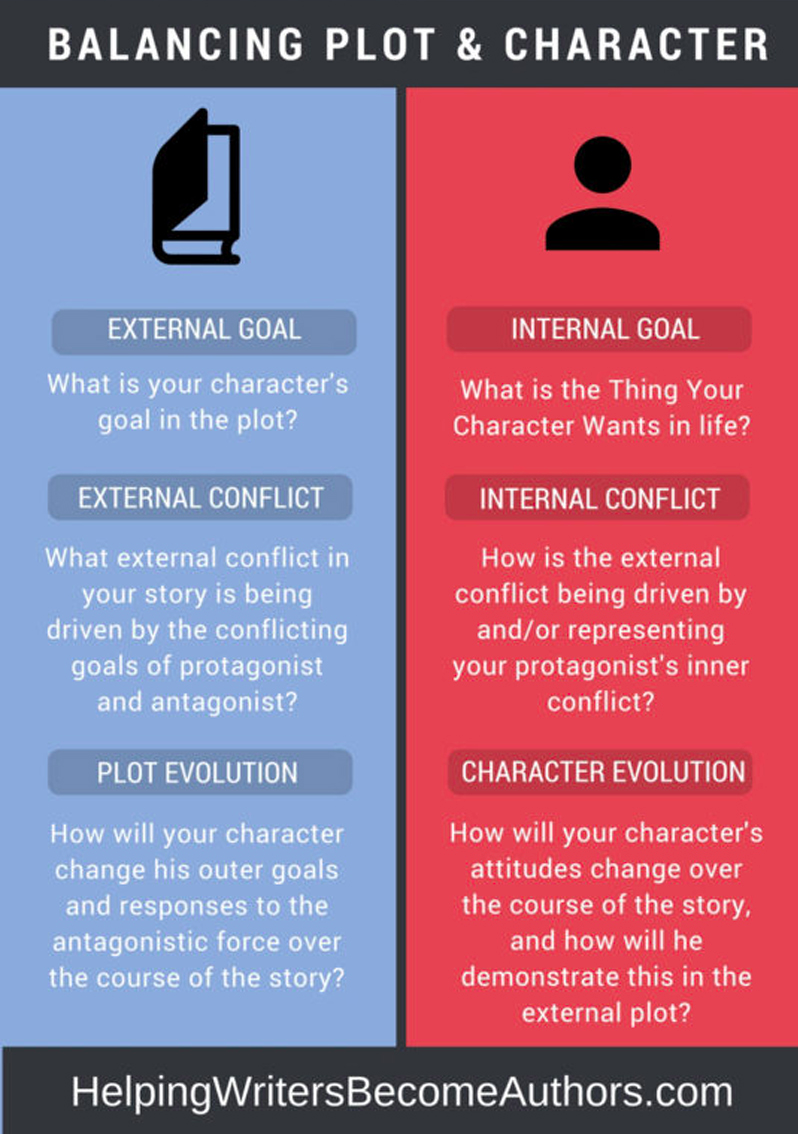How to Weave Together All Your Story’s Pieces
Episode #6 of the course How to outline your novel by K.M. Weiland
Welcome to the sixth lesson in our course on outlining your novel! Although writers often segregate various aspects of story (such as plot, theme, and character arc) in order to better get their heads around them, none of these things function alone. Plot depends on character, just as character depends on theme.
This, of course, means it’s impossible to figure out how to outline any one aspect of your story in isolation. Instead, you must “bob and weave” from one to the next. As you’re figuring out your story’s plot, many of the questions you’ll be raising will inevitably depend on answers of character and theme—and the same is true in reverse.
Be patient with the process. Take each question as it comes naturally. Don’t try to fit the aspects of your story into rigid compartments within your outlining process. But whenever you follow a rabbit trail into one aspect of your story, always bring it full circle to return and answer your original question.
Although the bob-and-weave is a technique you’ll use, in small ways and large, throughout nearly every aspect of your outline, there are three particular areas in which you’ll want to consciously put it to use.
1. Weaving Your Plot, Characters, and Theme
Plot, characters, and theme are the foundational cornerstones of your story. All three are important, and all three must be woven into the other two if they’re to create a cohesive and powerful story.
For example:
● When you work on your character’s external goal (a plot question), you must also consider how it is influenced by the Thing He Wants (a character arc question), which is, in turn, is influenced by the Lie the Character Believes, which stands in opposition to a truth (a thematic question).
● When you work on your story’s external conflict between protagonist and antagonist (a plot question), you must also consider how this conflict is driven by and/or representing the character’s concurrent inner conflict (a theme and character arc question).
● When you work on how your character will demonstrate his changing attitudes over the course of the story (a character arc question), you must also consider how this will, in turn, change his outer goals and his responses to the external antagonistic force (a plot question).
2. Weaving Your Protagonist’s Goals and Your Antagonist’s Goals
Even in situations in which the protagonist and the antagonist are physically separated for much of the story, they cannot be considered in isolation. Together, their mutually exclusive goals create the conflict, which, in turn, creates the plot.
For example:
● When you work on your protagonist’s overall plot goal, you must then consider how this will be blocked by your antagonist’s overall plot goal.
● When you work on your protagonist’s scene goal, you must consider how it will block the antagonist’s goals—and, in turn, inspire a defensive or offensive response in the form of a new scene goal for the antagonist.
● When your protagonist is off by himself, making plans, you must also be aware of the plans your antagonist is, in turn, making off by himself.
3. Weaving Your POVs/Timelines/Plot Points
Once you have successfully woven together all your story’s foundational elements, you will also want to consider narrative choices that ride a little closer to the surface. These are slightly more “cosmetic” choices. They do not affect the core of your story; they are, however, the vehicle that carries your story, and, as such, are just as integral to its successful presentation.
For example:
● Which POV (Point of View) will you use to tell each scene?
● If your story includes multiple plotlines or timelines, how will you order their scenes within the story?
● If your story includes multiple plotlines or character arcs, how will you harmonize their respective plot points?
Not all of these questions must be answered in the outline. But when you begin your scene outline (which we will discuss in a few days), all of these choices will influence the order of your scenes, the focus of your scenes, and ultimately the entire flow and force of your narrative.
Stay tuned! Tomorrow, we’re going to talk about how to properly structure your story while outlining.
Recommended book
Characters, Emotion & Viewpoint by Nancy Kress
Share with friends


